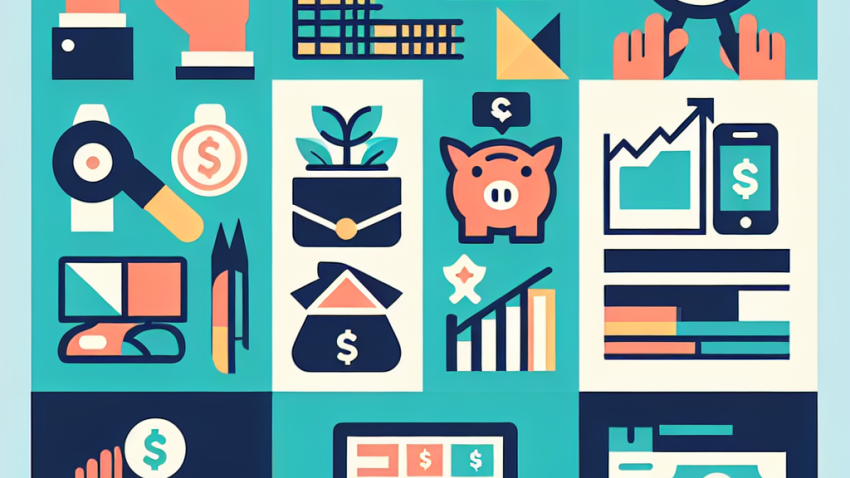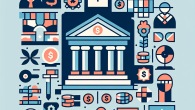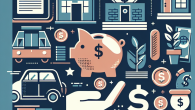
Investing While Paying Off Student Loans: My Balanced Strategy Explained
How to Build an Emergency Fund — Even If You’re Living Paycheck to Paycheck
You’ve seen the advice a million times: “Build an emergency fund of 3 to 6 months of expenses.” And if you’re like most people, your first thought is probably, “With what money?! I’m barely getting by as it is.” Trust me—I get it. I was there too. But here’s the secret they don’t put on the flashy infographics: you don’t need to be rich to build an emergency fund. You just need strategy, consistency, and a touch of Rachel-style sass and smarts.
In this guide, I’m going to show you exactly how to start (and grow!) an emergency fund even if your bank account regularly dips below two digits. Ready? Let’s money-makeover your reality.
What Is an Emergency Fund—and Why It’s More Than Just “Savings”
An emergency fund is your financial airbag. It’s a stash of money set aside specifically for unplanned expenses—think car repairs, medical bills, sudden job loss, or an unexpected move. It’s not for new iPhones, last-minute weekend trips or “emergencies” like a broken nail before a job interview. We’re talking true, life-gone-sideways situations.
More importantly, having this fund gives you one thing every financially independent woman (or man) deserves: peace of mind. You can’t put a price tag on not panicking when your car makes that weird rattling noise.
Step 1: Reset Your Mindset About Saving
First, let’s tackle what’s standing between you and your emergency fund: your own thoughts.
If you’ve ever said:
- “I don’t make enough to save.”
- “I’ll start saving when I get a raise.”
- “There’s always another bill…”
Babe, I hear you. But here’s the truth bomb: your income isn’t the problem. Your system is.
Saving doesn’t mean you have to stash away hundreds overnight. It starts with five dollars. Yes, $5. If you can afford one overpriced latte a week, you can afford to start building your emergency fund. It’s not about how much you start with—it’s that you start.
Step 2: Set a Realistic Goal (Spoiler: It’s Not $10,000 on Day One)
Let’s be real—if you’re living paycheck to paycheck, the idea of saving $10,000 could give you hives. So let’s scrap that (for now).
Start Small and Sequential
- Mini fund: $500 — This is your first major goal. Enough to handle unexpected costs like a minor car fix or surprise medical copay.
- Starter fund: $1,000 — Now you’re leveling up. This covers bigger surprise hits like emergency travel or a short income gap.
- Core fund: 3–6 months of basic expenses — This is the gold standard, but take your time reaching it.
Write down your first goal—say, $500—and break it into chunks. Saving $20/week gets you there in 25 weeks. That’s half a year—manageable, right?
Step 3: Trim Without Trauma
Okay, now let’s find the money. And no, I’m not telling you to give up every pleasure in life. I firmly believe saving doesn’t have to suck.
Ways to Save Without Feeling Deprived
- Audit your subscriptions: Still paying for three streaming services? Pick one. Rotate monthly if you must.
- Switch to generic: For at least five household items. Your wallet won’t know the difference—and honestly, neither will you.
- Skip one restaurant meal per week: If you normally dine out 3 times, make it 2. That extra $15 goes into the emergency fund.
You’ll be shocked how painless saving becomes when you get creative instead of cutting cold turkey.
Step 4: Automate That Baby
If you wait until the end of the month to move money into savings, guess what? There’s never any left. That’s why automation is your new BFF.
- Open a separate high-yield savings account: Somewhere you won’t touch it. Out of sight = out of temptation.
- Set up an automatic transfer: Even if it’s $10 a week. Consistency > perfection.
I like to call this the “set-it-and-glow” method—because nothing feels more adult than watching your funds grow automatically while you sip your midday coffee.
Step 5: Find Extra Cash (Yes, It Exists!)
You know what’s cooler than saving what you already have? Making a lil’ extra on the side and funneling it straight into your emergency fund. Here’s how:
Quick Ways to Make Extra Cash This Month
- Freelance your skills: Are you good at writing, designing, tutoring, or even organizing? There’s someone willing to pay for that.
- Sell unused clothes or items: That purse you haven’t used since 2019? Turn it into dollars on resale platforms.
- Take up odd jobs: Dog walking, babysitting, delivery driving—you’d be surprised how quickly it adds up.
Dedicate 100% of that money to your emergency fund. No detours. No detours via Sephora.
Step 6: Protect and Repeat
Once you hit your first goal—yay, champagne (or sparkling water) toast! Now protect that fund like it’s a national treasure.
Do Not Touch Unless It’s an Actual Emergency
- Your friend’s bachelorette trip to Vegas? Not an emergency.
- New AirPods? Not an emergency.
- Your hot water heater just exploded? Emergency.
Keep saving, even a little at a time, because emergencies don’t care how gorgeous or broke you are. They just show up, usually when your laundry is already overflowing.
Final Thoughts: Your Emergency Fund Is Self-Care, Seriously
Building an emergency fund while living paycheck to paycheck is hard—but it’s also one of the most rewarding acts of financial rebellion you can commit. It says, “I’m not waiting for life to wreck me—I’m preparing for it.” You don’t need a six-figure salary. You don’t need 10 credit cards.
You just need a plan, some consistency, and the belief that you—yes, you—can handle your money like a boss.
Now go take that first $5—and build the future you deserve.
Want more no-BS insights on personal investing and financial independence? Check out our About Us page or get in touch.









Leave a Reply